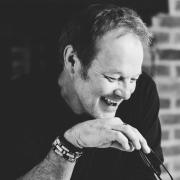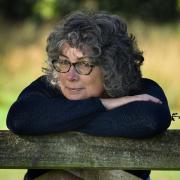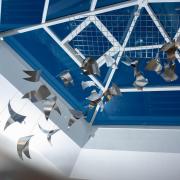The boy who never grew up may have lived in Neverland, but his origins are in Sussex - Rustington, near Worthing, to be precise

Peter Pan, the boy who never grew up, may have lived in Neverland, Second Star to the Right, but he came to Sussex for his holidays. To Rustington, near Worthing to be precise.
Wendy wasn’t with him, but Michael and John were, and a couple of the Lost Boys. And sometimes, Captain Hook came a-calling too and there were many fights and near-defeats when they met.
The house where he stayed still stands – Cudlow House, in Sea Lane – and is marked with a blue plaque. Not to Peter, although he’s mentioned, but to his creator, JM Barrie.
For Peter Pan was based on a child who, with his parents and four brothers, came to stay in Rustington, first in 1899, and was the inspiration for Barrie’s classic book, one of the most enduring children’s stories ever written.

James Matthew Barrie (1860-1937) initially found fame as a playwright. He came from a lower-class Scottish family, and the wash house, at the rear of the family home in Kirriemuir, Angus, would become the theatre for his first play, written when he was seven.
As an adult, Barrie moved to London and married Mary Ansell in July 1894, but the marriage would be childless, and eventually end in divorce.
His writing however, went from strength to strength. His play of 1897, The Little Minister, was a smash hit both in New York and London and established his reputation. Many considered the play equal to the work of George Bernard Shaw.
Walking his dog in Kensington Park one day in 1894, he encountered three brothers named Llewelyn Davies, out with their nanny. He amused them by waggling his ears and eyebrows and on later encounters with talk of fairies, pirates and desert islands.

He struck up a friendship with their parents - two more boys would be born in subsequent years - and here was obviously the family he would have dearly liked to have had.
The boys’ mother was Sylvia Llewelyn Davies, the daughter of Emma du Maurier, a relation of the famous author Daphne du Maurier. Sylvia’s husband was Frank, and the five boys were Jack, Peter, Michael, George and Nicolas.
DON’T MISS: How Alfred Lord Tennyson found inspiration in Sussex
In August 1899 the Llewelyn Davies family first stayed at Cudlow House, Rustington, for a summer holiday. The Barries took a house less than half a mile away and would visit the boys, who, a little weary of the beach and long walks, would eagerly dress up and play games devised by Barrie.

These usually involved a boy who would never grow up named Peter Pan, who lived in an enchanted place named Neverland, populated by pirates, mermaids, Indians and Lost Boys. Peter’s main adversary was, of course, a villainous pirate named Captain Hook.
Charming photographs, taken in the garden, reveal it was usually Michael who took the part of Peter and Barrie played Hook, with some relish it seems.
Barrie eventually shaped these games into the narrative for his stage play Peter Pan or the Boy Who Wouldn’t Grow Up, first staged in London in December 1904 to huge acclaim. It was seen in America the following year, to equal success.
Author Mark Twain saw it and wrote: “It is my belief that Peter Pan is a great and refining and uplifting benefaction to this sordid and money-mad age; and that the next best play is a long way behind it.”

The play was subsequently adapted into the book, Peter Pan and Wendy, published in 1911. It’s widely thought that the name Wendy was devised by Barrie, but it wasn’t and can be found in Victorian census lists. However it became widely popular because of the book.
Many elements of the story came not only from the games played, but also from Barrie’s life. In childhood Barrie lost an older brother, David, in a skating accident; he was the boy who would never grow up.
Barrie’s dog, a St Bernard bought for his wife, would become the model for Nana, the ‘nursemaid’ dog of the Darling family. The wash-house where his childhood play was staged would become the little house the Lost Boys build for Wendy.
And there’s no doubt that Sylvia became Mrs Darling, mother of John, Michael and Wendy; there has been much speculation that Barrie was deeply attracted to her.

Sadly, the story of the Llewelyn Davies family ends in the worst possible way. Arthur died in 1907, leaving very little money. Sylvia died not long after, in 1910, prompting Barrie to become the boys’ unofficial guardian.
Misfortune continued to bedevil the family. George was killed in action during the World War I, Michael drowned in 1921 and Peter - who came to resent being referred to as Peter Pan all his life - committed suicide in 1960. However, the youngest, Nicholas, lived to be 77,dying as recently as 1980.
But they live on, and will do for ever more, in what many reckon to be the best children’s book ever written and in the play, which will be performed at many theatres over forthcoming Christmas seasons.
The popularity of Peter Pan has endured for over a century, and it’s rather wonderful to realise that it all took flight from fun and games in a sunny garden on the Sussex coast.
Thanks to Claire Lucas and Julie Covey of Rustington Museum for help preparing this article.



























